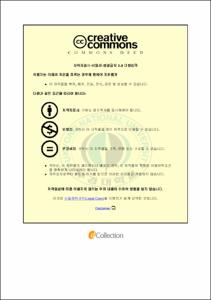관광해설정보 유용성, 마음충만, 관광경험 및 행동의도간의 구조적 관계
- Alternative Title
- The Structural Relationship among Tourism Interpretation Availability, Mindfulness, Tourism Experience, and Behavioral Intention
- Abstract
- This study was intended to identify the influence of tourism interpretation availability on tourism experience and behavioral intention through mindfulness. For this purpose, this study designed to analyze the way tourism interpretation availability affects on mindfulness and memorable tourism experience. And also this study analyzed the influence of memorable tourism experience on behavioral intention.
Structural equation model(SEM) was conducted for analyzing the data. The result of this study revealed that tourism interpretation availability gave a positive effect on mindfulness and mindfulness also gave positive effect on tourism experience. Finally, this tourism experience also gave a positive effect on the behavioral intention such as re-visit intention and recommendation.
This study has following implication at the practical level: first, tourism interpretation availability is one of important factor to stimulate the tourist's mind as this interpretation availability can make tourist's mind to be mindful and mindfulness of tourist's can influence to their experience consequently. Even though the method, content or media are also important factors of interpretation, this study suggest that interpretation availability is also important factor in tourism interpretation.
Second, manager of tourism destination could possibly use mindfulness concept and measurement as a tool of asses how they are doing from a mindful sense. If they adopt a mindfully oriented conceptual approach in how they are design, develop, and implement in interpretation availability for their setting, they could periodically administer the general measure of mindfulness to evaluate their program and service.
As for the scientific level, this study adopt the concept of mindfulness as an intervention factor which mediated tourism interpretation availability and tourism experience. This means that relevant studies can be promoted by conceptual approach of this mindfulness and also approach in different strategic aspects of tourist attractions.
Future research efforts should consider measurement of tourism interpretation availability in detail and also measurement of mindfulness in different tourism destination with the purpose of tourism.
Key Words : tourism interpretation availability, mindfulness, memorable tourism experience, re-visit intention, recommendation
- Issued Date
- 2014
- Awarded Date
- 2014. 8
- Type
- Dissertation
- Publisher
- 부경대학교
- Alternative Author(s)
- Han Kyung
- Affiliation
- 대학원
- Department
- 대학원 경영학과
- Advisor
- 양 위 주
- Table Of Contents
- 【차 례】
【표차례】··········································································ⅳ
【그림차례】·······································································ⅴ
Abstract···········································································ⅵ
제 1 장 서론 ·····································································1
제 1 절 연구의 배경···························································1
제 2 절 연구의 목적···························································4
제 3 절 연구의 구성···························································6
제 2 장 이론적 배경······························································9
제 1 절 관광해설정보 유용성·················································9
1. 관광해설정보의 개념 ···················································9
2. 관광해설정보에 관한 선행연구 ······································12
제 2 절 마음충만······························································18
1. 마음충만의 개념 ·······················································18
2. 마음충만에 관한 선행연구 ··········································21
제 3 절 관광경험······························································23
1. 관광경험의 개념························································23
2. 관광경험에 관한 선행 연구···········································26
제 4 절 재방문의도 ··························································30
제 5 절 추천의도······························································31
제 3 장 연구모형의 설계 및 가설 설정······································34
제 1 절 연구모형의 설계 ··················································34
제 2 절 연구가설의 설정 ···················································35
1. 관광해설정보 유용성과 마음충만의 관계 ························· 35
2. 마음충만과 관광경험과의 관계 ······································37
3. 관광경험과 재방문의도의 관계 ···································39
4. 관광경험과 추천의도의 관계 ········································40
제 4 장 연구방법 ·····························································42
제 1 절 구성개념의 조작적 정의 ··········································42
1. 관광해설정보 유용성 ··················································42
2. 마음충만································································ 42
3. 기억에 남는 관광경험 ················································43
4. 재방문의도·······························································43
5. 추천의도·································································44
제 2 절 조사 설계 및 자료의 수집 ········································44
1. 예비조사·································································44
2. 표본선정 및 자료수집 ················································45
제 3 절 분석방법·····························································45
제 5 장 실증분석································································46
제 1 절 조사 응답자의 인구통계학적 특성 ·······························46
제 2 절 측정항목의 신뢰성 및 타당성 분석·······························48
1. 신뢰성 검증 ····························································48
2. 타당성 검증·····························································51
제 2 절 연구 가설 검증······················································54
1. 연구모형의 적합도 평가 ··············································54
2. 연구가설 검증···························································55
제 6 장 결론······································································58
제 1 절 연구 요약 및 시사점 ··············································58
제 2 절 연구의 한계점 및 향후 연구방향 ································62
【참고문헌】······································································65
【설문지】·········································································84
- Degree
- Doctor
- Files in This Item:
-
-
Download
 관광해설정보 유용성, 마음충만, 관광경험 및 행동의도간의 구조적 관계.pdf
기타 데이터 / 1.03 MB / Adobe PDF
관광해설정보 유용성, 마음충만, 관광경험 및 행동의도간의 구조적 관계.pdf
기타 데이터 / 1.03 MB / Adobe PDF
-
Items in Repository are protected by copyright, with all rights reserved, unless otherwise indicated.